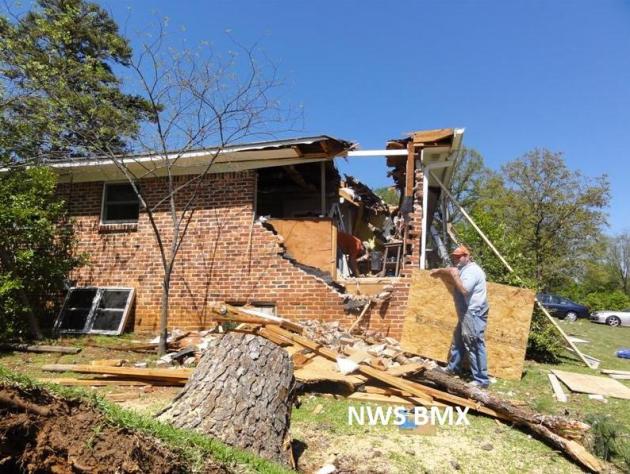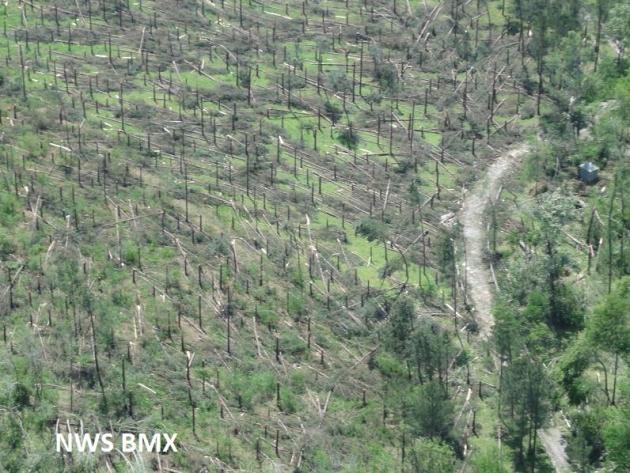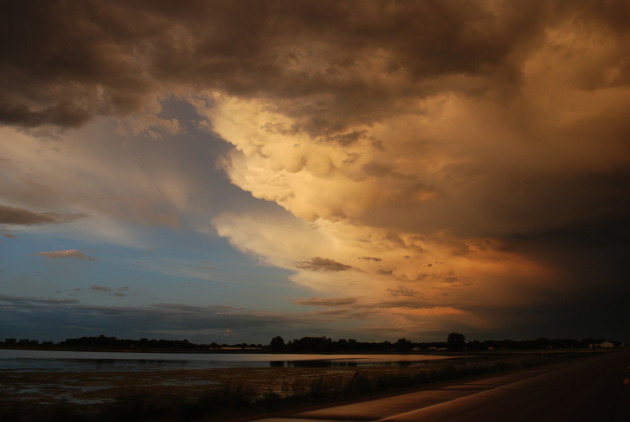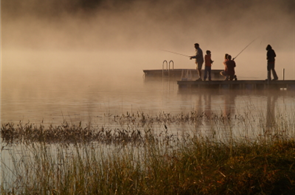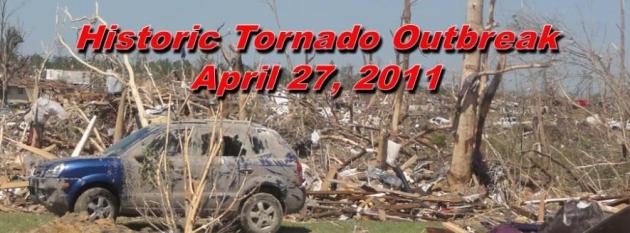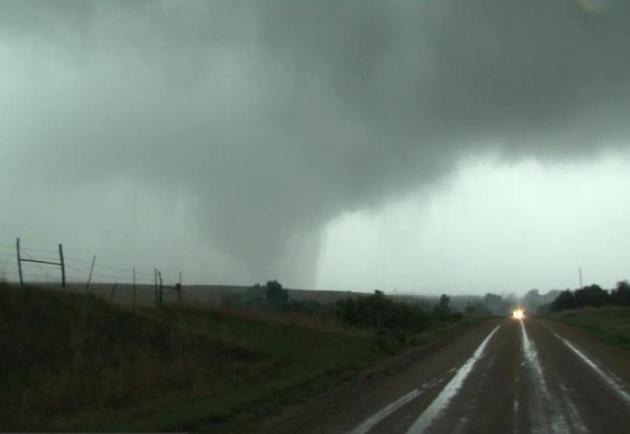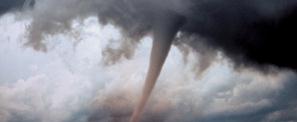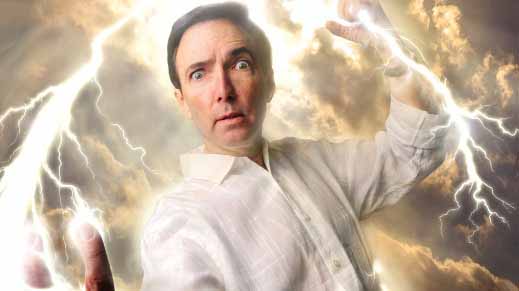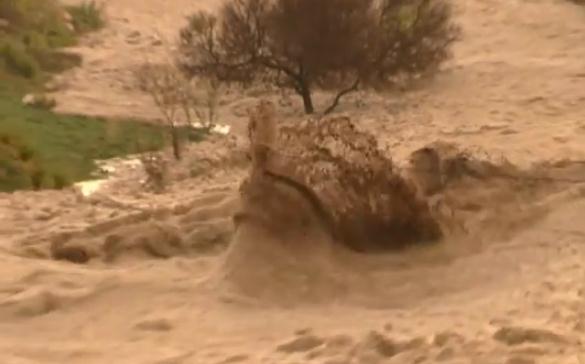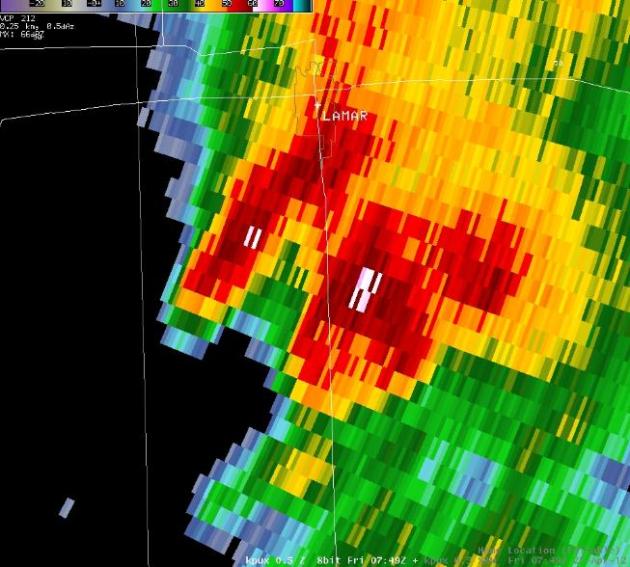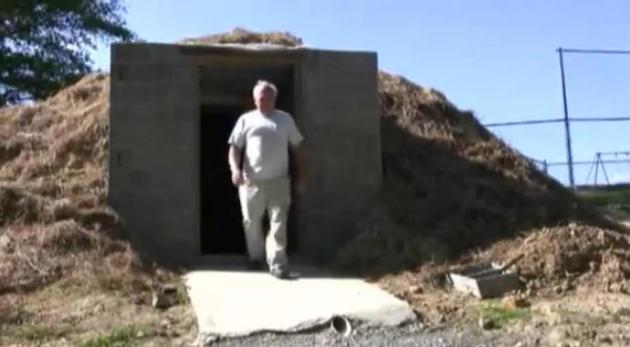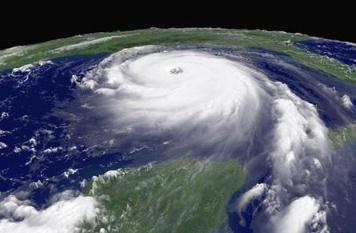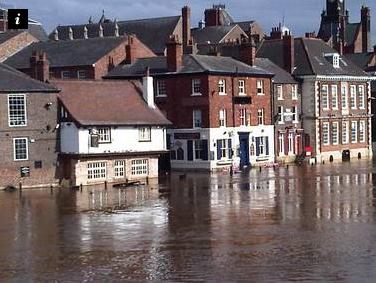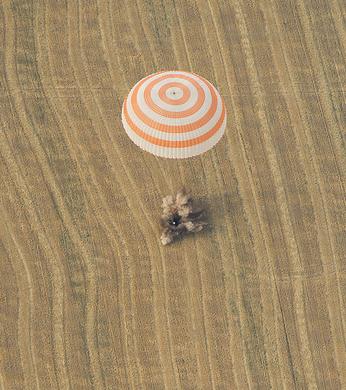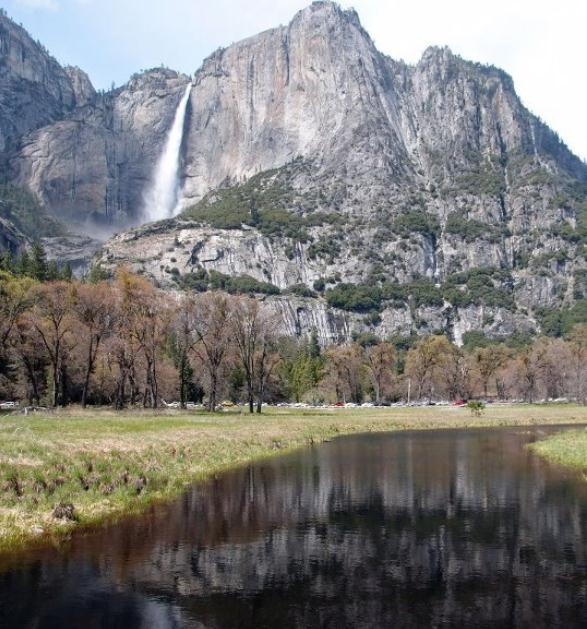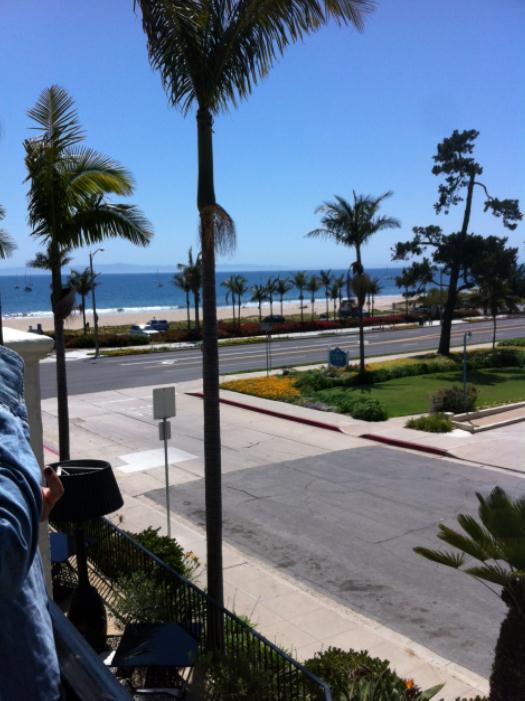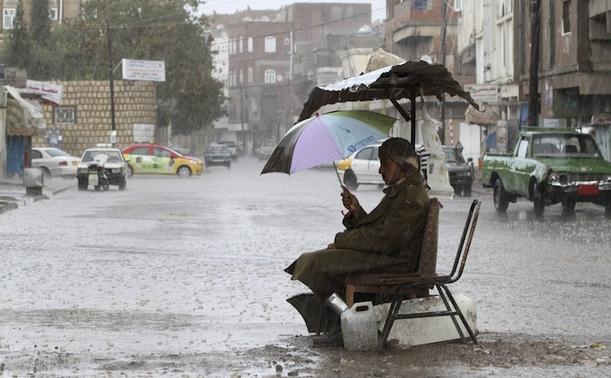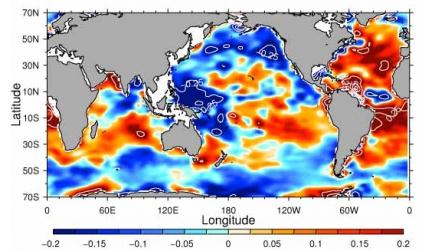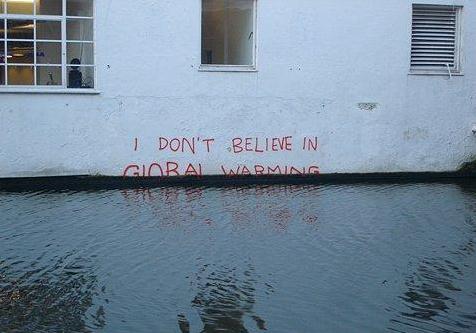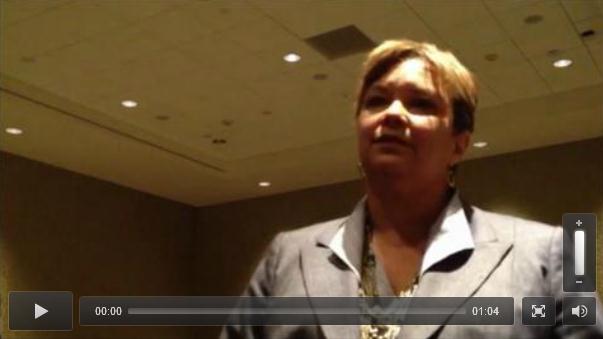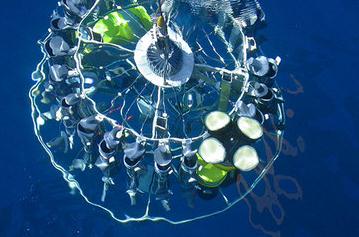"Anyone who says sunshine brings happiness has never danced in the rain." - author unknown.
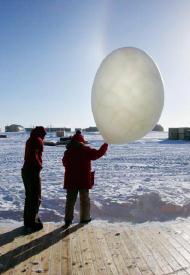
"
In 1928, teletype machines replaced telegraph and telephone
communication of weather information. Routine upper air observations by
aircraft were standardized in 1931, replacing Kite Stations. But only 6
years later, in 1937, the first official Radiosonde program of
comprehensive upper air balloon reports was established, ending the
domestic aircraft observation program." - from A History of Weather Technology by meteorologist Miles Muzio; details below.
"
It was difficult to know this country without having
wintered there; for on arriving in summer everything is very pleasant on
account of the woods, the beautiful landscapes, and the fishing for the
many kinds of fish found there. There are six months of winter in that
country. The cold was severe and more extreme than in France, and lasted
much longer." - Samuel de Champlain, early 1600s - from a great summary of the evolution of America's weather service from
NOAA.
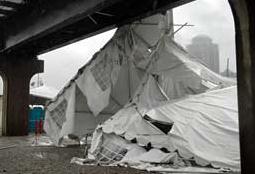 1 Dead After St. Louis Storm Blows Beer Tent Over
1 Dead After St. Louis Storm Blows Beer Tent Over. Severe straight-line winds bloew across St. Louis late Saturday; the latest from AP and
Weatherbug.com: "
One person died Saturday and more
than a dozen were taken to a hospital with injuries after high winds
blew over a beer tent near Busch Stadium in St. Louis. At least five others were
critically injured and up to 100 people were treated at the scene after
straight-line winds whipped through a large tent near Kilroy's Sports
Bar, where about 200 people were celebrating after the Cardinals beat
Milwaukee 7-3 earlier in the afternoon, officials said. Eddie Roth, a spokesman for the
St. Louis Department of Public Safety, said winds of about 50 mph
shattered aluminum poles that held up the tent, which was located south
of the stadium. The force of the wind blew the tent onto an adjacent
railroad bridge."
* more details
here from The Washington Post.
325 people died from tornadoes between April 25-27,
2011 across the Deep South, 142 of those fatalities in Alabama alone.
Hardest hit: Alabama, which saw more tornadoes (and tornado deaths) than
any nation in the USA last year. 2011 saw the highest tornado death
toll since 1925, in spite of Doppler radar, continuous coverage on local
radio and TV and 3 days warning. More details from the Birmingham,
Alabama office of The National Weather Service below.
 Ah...Spring In Wyoming
Ah...Spring In Wyoming. From the
Wyoming Highway Patrol: "
You gotta love spring time in Wyoming! Whatever your travel plans are this weekend, please buckle up!"
4% increase in water cycle over the last 50 years,
the result of a 1 F. rise in temperature, worldwide (twice the rate
predicted by computer simulations).
"...it implies that the water cycle could quicken by as much as
20 percent later in this century as the planet warms, potentially
leading to more droughts and floods." - from a New York Times story, details below.
"
The stronger water cycle will mean stronger rains and
intensified droughts over the oceans. And what holds at sea also
extends over land, because the oceans cover 71 percent of the globe,
hold 97 percent of the world's water, and have already sucked up 90
percent of the extra heat trapped by humanity's greenhouse gas
pollution. The increase in warm water vapor as the globe heats will fuel more violent storms,
whereas droughts in places like Australia, stuck in the middle of
oceanic regions dominated by evaporation, will only grow more severe." - from an article at Scientific American; details and links below.
April: Windiest Month Of The Year. I was not aware of this fact; more incentive to read Dr. Mark Seeley's excellent weekly
WeatherTalk blog; here's an excerpt from this week's installment: "
April
also lived us to its reputation as the windiest month of the year,
with many days bringing wind gusts of 30 mph or greater. Both Moorhead
and Rochester saw 15 days with wind gusts of 30 mph or greater. The
Twin Cities had two days when winds peaked over 40 mph, while Rochester
had seven such days, including 51 mph on the 15th. In addition to the
wind, April brought some thunderstorms, hail, and even tornado reports.
Tornadoes were reported in McLeod and Lyon Counties on April 15th,
and then on April 21st, between 5:30 pm and 9:40 pm tornadoes were
reported from Clay, Wilkin, Otter Tail, Chippewa, Redwood, Douglas, and
Swift Counties. Some agricultural structures were damaged by these
tornadoes, but overall they were short-lived and did not inflict
widespread damage."
 This Morning's Weather Balloon In Tallahassee (Florida) Actually Hit A Person
This Morning's Weather Balloon In Tallahassee (Florida) Actually Hit A Person. The crazy details from the local
Tallahassee NWS office: "We have an interesting story about this morning’s weather balloon
launch! When the instrument fell back to the ground around 9:30 AM, it
actually landed on a person in Jefferson county! This is one of the main
reasons that we attach a parachute to the instrument every time we send
one up. It allowed the instrument to fall slow enough that it did not
injure anyone on the ground. We have uploaded an image of the
approximate path of the balloon based on a model derived wind forecast.
Sure enough, it shows a touchdown in Jefferson county! If you are ever lucky enough to stumble upon (or be targeted by) one
of our instruments, be sure to send it back to us! Enclosed within the
instrument itself is a postage paid mailing bag. Just follow the
attached instructions, drop it off at the post office, and we’ll recycle
it! Be sure you let the battery cool down first as this may take
several hours.
*
Fun Fact: Based on the size and population density of Jefferson
county, a rough estimate of your odds of being hit by the instrument
(provided you were in Jefferson county this morning) are 1 in
506,800,000,000,000,000!!!!!
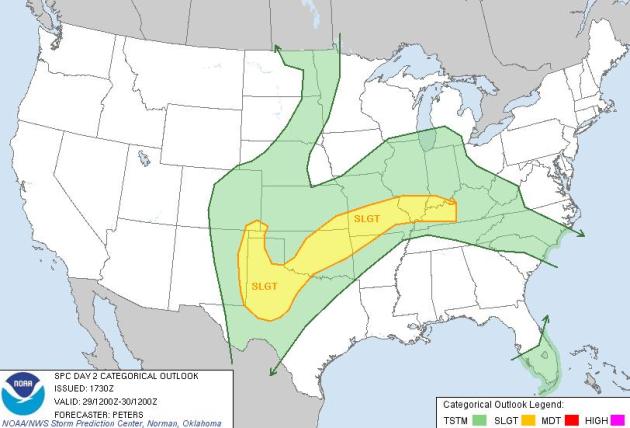 Sunday Severe Threat
Sunday Severe Threat.
T-storms may exceed severe limits from San Antonio to Oklahoma City,
Springfield, Missouri and St. Louis to Louisville. A few isolated
tornadoes can't be ruled out. Map courtesy of
NOAA SPC.
April 25-27, 2011: Alabama's Deadliest Tornado Outbreak. The Birmingham, Alabama office of The National Weather Service has a
good overview
of the surreal outbreak of EF-3 to EF-5 strength tornadoes that roared
across Alabama over 3 days, including the monster that hit Tuscaloosa: "
April
of 2011 will live in the memory of central Alabamians forever. Two
major tornado outbreaks. Three different days with tornadoes. Three
significant straight-line wind events. Over 2,000 people injured. 142
killed (just in Alabama). Billions of dollars in damage. The NWS in
Birmingham is taking a look back at that incredible month, starting with
the two major tornado outbreaks."
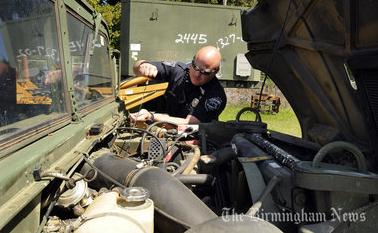 Hard Lessons From Twisters Have Made Alabama One Of The Best Prepared In Country.
Hard Lessons From Twisters Have Made Alabama One Of The Best Prepared In Country. Here's an excerpt of a great story from
The Birmingham News (al.com) about lessons learned from last April's deadly tornado outbreak: "
The tornado that plowed through downtown Cullman
one year ago today brought entire city blocks to the ground, making
mulch of some businesses, churches and homes. And almost as soon as the
city got a good look at the devastation, a second storm hit. "The volunteers started coming in from everywhere," said Kasey
Kearce, the executive director of Cullman's United Way. "It was
tee-total chaos." Like every other community hit in the April 27 tornadoes, Cullman
found it wasn't fully prepared to respond -- not just to the damage
inflicted by a vicious twister but to the outpouring of help from
generous, good-hearted people."
Photo credit above: "
Officer Eric Cole checks the oil in a HMMWV. The
Cullman Police Department has acquired new emergency equipment to be
better prepared to handle emergency situations like the April 27, 2011
tornadoes. Chief Kenny Culpepper said the new equipment will help get
emergency personnel to stricken areas sooner and aid with rescues and
debris removal. (The Birmingham News/Joe Songer)."
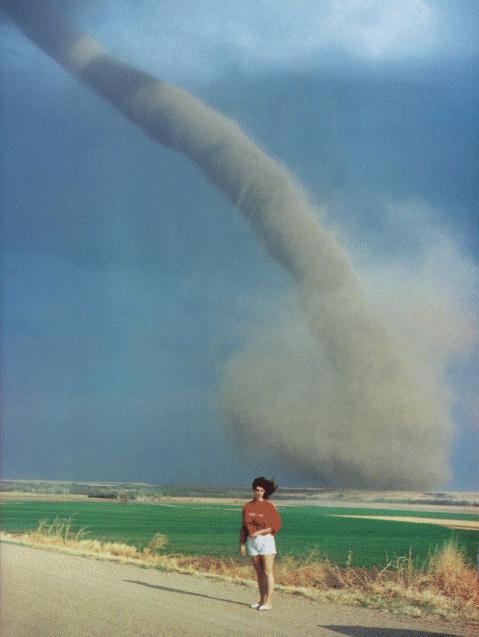 Emergency Officials To Storm Chasers: Stay Home.
Emergency Officials To Storm Chasers: Stay Home.
An interesting (and inevitable?) reaction to the flood of storm chasers
hitting America's highways every time severe weather threatens. And as
long as local stations and national networks keep airing spectacular
footage those storm chasers will continue to...chase. I have mixed
feelings. I understand the safety challenges, for the chasers and
emergency first responders trying to do their jobs. And yet research
confirms that many people do not take evasive action during a
life-threatening situation until and unless they actually see that the
tornado is real, on the ground, moving toward their neighborhood. In a
perfect world (it ain't) we'd have a national network of live HD
webcams, and not have to rely on people holding up iPhones, but until
that day comes, I think we'll continue to have this problem. AP and
Fortwayne.com have the story; here's an excerpt: "
MUNCIE,
Ind. (AP) — The recent outbreak of severe weather in
Kansas had storm chasers out in full force. So many of them, in fact,
that emergency officials everywhere are taking notice, and putting out
warnings. Delaware County Emergency Management Agency Director Jason
Rogers' advice to would-be storm chasers? Stay home. "We certainly do
not encourage people to put themselves in harm's way just to be able to
see a storm," he said. Sometimes, storm chasers can become a hindrance
rather than a help, he added. That
happened in Kansas, where officials said that the large amount of storm
chasers -- jamming the streets with their vehicles -- hindered
emergency responders."
 A Year After Major Tornado Outbreak, Industry, Victims Share Stories
A Year After Major Tornado Outbreak, Industry, Victims Share Stories. More details from PropertyCasualty360.com: "
About one year after a tornado tore off the roof and blew out some
walls of the Hodges home in Harvest, Ala., another twister this year in
March destroyed the house. “It was close to what it was before the [first] storm,” James Hodges
says of how the home was nearly rebuilt before being hit again this
year. Like it had after the first storm, State Farm, the Hodges’ insurer,
is paying to have the home rebuilt—this time starting at the foundation,
which was just poured."
Rain-Wrapped Tornado Over Kansas. Here's a photo of a
tornado completely wrapped in rain, which can make it very difficult to
distinguish a tornado circulation from a rain shaft.
Photo courtesy of WeatherNation TV: "
Check
out this footage of the tornado spotted in Cloud County, KS tonight
from storm chaser Brandon Ivey. Severe storms are still possible
tonight, but the tornado threat appears to be diminishing for the
Central Plains. http://youtu.be/TQ7jn4YIqRw."
"
On Cable TV they have a weather channel - 24 hours of weather. We had something like that where I grew up. We called it a window." - Dan Spencer
Tornado Safety Tips From FEMA. The folks at
FEMA
have some very useful information, and a few good tip-offs that a
thunderstorm may be especially severe, capable of spinning up nature's
deadliest wind:
- To begin preparing, you should build an emergency kit and make a family communications plan.
- Listen to NOAA Weather Radio or to commercial radio or
television newscasts for the latest information. In any emergency,
always listen to the instructions given by local emergency management
officials.
- Be alert to changing weather conditions. Look for approaching storms.
- Look for the following danger signs:
- Dark, often greenish sky
- Large hail
- A large, dark, low-lying cloud (particularly if rotating)
- Loud roar, similar to a freight train.
- If you see approaching storms or any of the danger signs, be prepared to take shelter immediately.
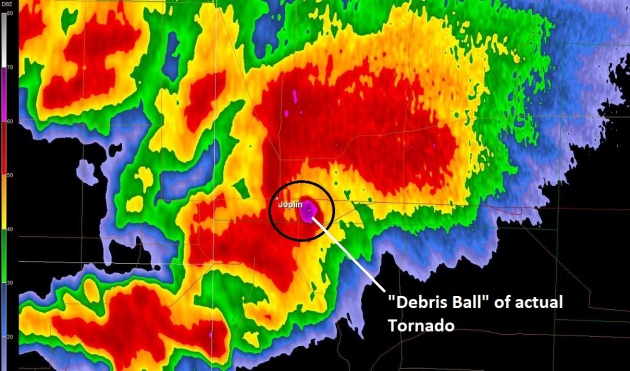
 The History Of American Weather Technology.
The History Of American Weather Technology. Here's a snippet of a very informative post from meteorologist Miles Muzio at the WeatherWhys Blog - at
Bakersfield Now: "
How important is the weather? From earliest civilization, farming has
been completely dependent upon adequate amounts of rainfall and
sunshine, a lack of freezing temperatures together with conditions that
limited pests. Travel across great oceans from ancient time has also
depended upon favorable winds and a minimum of storminess to guarantee
success. Agriculture and commerce have indeed bowed to the whims of
weather at every step of the way from the start. While various
innovations of science were ongoing in renaissance Europe, the new world
beckoned as a potential proving ground for technological advancement
born out of necessity and opportunity. A prominent American colonist and
perhaps the most famous pioneer to blaze new scientific trails was
Benjamin Franklin. His iconic kite experiment has forever installed this
man into the American persona for ingenuity and insight."
* NOAA has a terrific story about the evolution of weather observation and technology
here.
How To Tell When Your Wife Is Really, Really Upset. A photo essay below.
"Ask Paul". Weather-related Q&A:
"A flash flood of hail? Is this for real?"
Jeff Jorgensen
Minneapolis
Jeff - thanks for the clip; this is one of the most amazing flash
flood/hail events I've ever seen. This particular "supercell"
thunderstorm in south Texas dropped as much as 3-4 FEET of marble and
golfball-size hail, as well as torrential rains, which swept the hail
downstream - a raging torrent of icy rain, which sparked ground fog
(differential in temperature, hail/ice cooling the warm air from below).
It must have been a surreal sight. More details via
YouTube: "
Storm
Chaser Doug Black hits the road during the hail storm in the Texas
Panhandle with Storm Search 7 Chief Meteorologist Steve Kersh, and
managed to capture mounds of hail piling up 2 to 4 feet and running in
rivers near the Potter/Moore county line." (the video clip has seen over 670,000 views - a pretty good indicator that this is an extraordinary event).
Rare Late-Night Southeast Colorado Tornadoes. Here's a summary of the recent outbreak in southeastern Colorado during the early morning hours on April 27, courtesy of the
Pueblo office of The National Weather Service: "
A
team of meteorologists from the National Weather Service in Pueblo is
in Southeast Colorado conducting a storm damage survey. Preliminary
findings indicate 5 tornadoes touched down, with 2 occurring in Prowers
County, 2 in Kiowa County and one in Bent county. The tornado which
touched down to the southwest of Lamar has been preliminarily rated as
an EF2. Another tornado that touched down to the east of Lamar
appears to have produced EF1 to low end EF2 damage. The tornado which
touched down near Chivington has been preliminarily rated as an EF1,
and the 4th tornado produced low end EF2 damage to the Northeast of
Chivington. The 5th damage track was located a couple miles to the
west and north of Wiley and a preliminary EF rating is still being
determined. Damage surveys are still underway at this point and
information will be updated here as soon as it becomes available."
"Safe Rooms" Booming In Tornado-Prone Areas. Don't
have a basement? You can reinforce an interior closet to withstand a
major tornado strike, for less $$ than you might think. Check out this
video clip, courtesy of AP and
YouTube: "
Many
people simply had nowhere to hide last year when killer tornadoes bore
down on places like Smithville, Miss., Tuscaloosa, Ala., and Joplin,
Mo. Thousands across Tornado Alley are making sure they'll be ready the
next time. (April 27)."
Hurricane Season Expected To Be Less Active Than 2011. Details from
fosters.com: "
While
precipitation in the region has been mild in terms of rain this
season, the East Coast is likely to see a change in that pattern over
the summer as hurricane season arrives — though it is predicted to be a
less active year than 2011. According to information released by
Accuweather.com, a big storm bringing heavy, flooding rain to the coast
is possible sometime this season, though where it could strike land is
dependent on where the storm actually forms. There are 12 named
tropical storms for the 2012 season, five named hurricanes and two major
hurricanes forecast. That's fewer than 2011 saw, though meteorologists
warn it only takes one major hit from a storm to have a devastating
impact and wipe away the false sense of security, or "hurricane
amnesia," for places that have not had a direct hit in years."
Warnings Of Flash Floods As Britain Set For "Real Soaking". Details from the U.K.
Independent: "
Parts
of Britain might be in the middle of a drought, but some areas of
England and Wales are braced for the possibility of flash floods this
weekend as the deluge continues at the end of a week of heavy rain.
Warnings of localised flooding have been issued in parts of the South
West, South East and Midlands, as well as East of England and Wales for
Sunday as the wet weather moves across the country. The flood warnings
follow the wettest week in Wales and England since December."
Rough Landing. In case you missed this video clip -
it's worth a look. I have new respect for professional pilots. Landing
in a cross-wind is one of the more challenging requirements for safe air
travel, definitely non-trivial on a (wild and windy) day like this.
Here is the
YouTube video: "
High
winds in Bilbao, Spain, made normally routine landings and takeoffs
treacherous. Check out this for some shaky footage! Four flights were
diverted from the airport due to the weather."
Expedition 30 Landing. It's still a bit surreal
seeing American astronauts on Russian Soyuz spacecraft - but at least
they got home safely. Details via NASA and
Flickr: "
The
Soyuz TMA-22 spacecraft is seen as it lands with Expedition 30
Commander Dan Burbank, and Flight Engineers Anton Shkaplerov and Anatoly
Ivanishin in a remote area outside of the town of Arkalyk, Kazakhstan,
on Friday, April 27, 2012. NASA Astronaut Burbank, Russian Cosmonauts
Shkaplerov and Ivanishin are returning from more than five months
onboard the International Space Station where they served as members of
the Expedition 29 and 30 crews. Photo Credit: (NASA/Carla Cioffi)."
Photo Of The Day: Yosemite In All Its Glory. Check out this Friday photo from Yosemite National Park, via
Facebook: "
A
little bit of sun and a little bit of rain have caused the river to
rise and the waterfalls to grow! Also, the dogwood are beginning to
bloom in Yosemite Valley (http://on.fb.me/JFY3Cq).
While there is still not yet an opening date for the Tioga Road, it is
opening for bicycles on Saturday, and the Glacier Point Road is already
open."
Friday Pics. Thanks to Tracy Corris, who sent in a
photo from Santa Monica, California (upper left - obviously). Joan
Kruhoeffer sent me the photo of mamma duck and her babies from Manheim,
Pennsylvania. I appreciate everyone who takes the time to send in
photos, YouTube clips, tweets and FB posts.
Honda Develops Technology Designed To Prevent Traffic Jams.
Commuter "intelligence"? Sounds like a good idea to me. I'd even spend a
few bucks/month to avoid standstills on I-394 or I-494. Details from
gizmag.com: "
While modern in car satnav
systems can draw on real-time traffic congestion data and suggest
alternative routes for drivers to avoid high traffic areas, Honda has
taken a different approach to try and minimize the potential for traffic
jams. The company has developed new technology designed to detect
whether a person’s driving is likely to create traffic jams and
encourage them to drive in such a way as to keep traffic flowing."
(check out the photo above carefully. Who is this woman, and why is she
reading a book, while on the phone, in stop-and-go traffic? Be afraid...
Woman Goes On "Sunlight Diet", Unsurprisingly Dies Of Starvation.
No, it's not funny - but it shows how gullible people can be in looking
for a magic cure or elixer. In news of the weird, here's a baffling
story from
geekosystem: "People will do almost anything to lose weight, although admittedly, things like
the Twinkie diet don’t sound that bad. A
sunshine diet,
on the other hand, sounds absolutely horrible, but that’s not going to
keep some people from trying it. Then again, when was the last time
you saw a fat plant, right? Taking that last bit into consideration, a
woman from Switzerland decided
to give this diet a shot. Did she lose weight? Definitely. Is she
still, you know, alive to enjoy her svelte new physique?
Unsurprisingly,
no."
World's Smallest Electric Car? Check out this story at the
U.K. Daily Mail; here's an excerpt: "
Fed
up of cramming into the lift at work in the morning? Soon you'll be
able to drive into it instead - because the world's smallest eco car is
about to go on sale and it's tiny enough to fit into office elevators.
The 'Volpe' is just one-meter wide, 1.5 meters tall, weights just 350kg
and can squeeze into the smallest of gaps, which means the commute to
work can continue right up to the office, where the car can be charged
at your desk." (Is it me or does this thing look like something out of the Pixar movie "Cars"?)
"Powerpot" Generates Electricity From Your Campfire. So many gadgets (er...productivity tools)...so little time. Details from
treehugger.com: "
It
used to be that you didn't need a lot of electricity when you went
camping; now nobody goes anywhere without their phone or GPS unit. But
how do you keep them charged? The PowerPot is a very clever solution to
the problem; it has a thermoelectric power source built into a cooking
pot so that generates electricity from the heat of cooking. It uses the
Peltier effect,
familiar in solid state coolers; here it runs in reverse, converting
heat into electricity. There wasn't much use for such a small amount of
electricity until recently, when LEDs and microelectronics made 5 watts
useful."
Test Drive: Ford Focus Electric. Is it worth 39K?
Gizmag.com has more details on the upcoming, gas-optional version of the Ford Focus; here's an excerpt: "...
Kuehn
made it pretty clear that Ford is looking to compete more aggressively
with the Nissan Leaf with this iteration, which the automaker claims
can go from no juice to fully charged in half the time (around 4 hours)
- using of Ford's 240-volt charging station
that costs an additional US$1,500 - while also getting a better
single-charge range of about 76 miles (122 km). At the core of the
electric Focus, is a pair of 600 pound (272 kg) liquid-cooled
lithium-ion 23 kilowatt hour batteries. Fortunately, there's an app for
managing them. MyFord Mobile features prominently in Ford's pitch for
its electric vehicle with an app to help plan trips, manage charging
and locate charging stations along the way."
Teachable Moment. One of my good friends, a TV
meteorologist in Philadelphia, Glenn "Hurricane" Schwartz recently had a
very close call. I'm glad he's doing ok after a double bypass procedure
- and WCAU-TV had the presence of mind to turn his ordeal into a
special report, trying to help other "walking timebombs" get help before
a potential heart attack.
TVSpy.com has the details: "
WCAU chief meteorologist Glenn “Hurricane” Schwartz
is resting in a Philadelphia hospital after undergoing double bypass
heart surgery this morning. “Glenn is recuperating well and is in good
spirits,” WCAU news director Chris Blackman
said. “He feels fortunate that he recognized the signs of potential
trouble. We’re all keeping him in our thoughts and wish him a speedy
recovery.” As Schwartz spends the next several weeks recuperating, the
NBC station plans to run a series of special segments about heart
health."
 What TV Viewers Are Doing On Their Tablets (Study)
What TV Viewers Are Doing On Their Tablets (Study). Here's an excerpt of an interesting study from
lostremote.com: "
It seems like we’ve been publishing a couple TV-tablet studies every week — you can catch up in our social TV research section — and today Nielsen published part two of its tablet study, which breaks it all down by demographic. You may remember the first study that found 45% of US tablet owners are using the device daily
in front of TV. Today, Nielsen answers the question, what are they
doing on their tablets? And how does it change across demographic
groups?"
"Brydge" Aims To Turn Apple iPad Into Macbook Air. For the many iPad enthusiasts out there, here's an excerpt from
gizmag.com: "
Brydge
is a keyboard cover for the iPad that attempts to turn the Apple
tablet into something very close in style and weight, if not grunt, to
the MacBook Air. Currently a Kickstarter project, Brydge aims to join
the growing number of accessories tailored for those who produce as well
as consume content on their iPad."
How To Tell Your Wife Is....Um...Ticked Off. A friend sent me a few photos that underscore the downside of cheating. Yeah, don't even think about it - not worth it.
"
It is hard to fail, but it is worse never to have tried to succeed." - Theodore Roosevelt
Risk of Spring
"There is little chance that
meteorologists can solve the mysteries of weather until they gain an
understanding of the mutual attraction of rain and weekends" mused Arnot
Sheppard.
That's two miserable Saturdays in a row. It was joyously foul - a
million dollar rain for farmers and gardeners; not nearly enough rain to replenish
low lake water levels. It could have been worse. Sleet fell as I ducked out to retrieve my Star Tribune newspaper at 8
am. Had the lowest 3,000 feet of the atmosphere been 2-3 F. colder we'd be
tromping around in 2-4" of slush.
Cue the robins and lawn mowers. This week should restore your faith in a Minnesota
spring; low-60s today, 70 tomorrow, near 80 Tuesday before falling back into
the low 70s by the weekend. Rain brushes southeastern Minnesota tonight, a few strong/severe T-storms possible late Tuesday, a
spattering of showers and T-showers Friday into the weekend. A vigorous
boundary setting up nearby (80s over Iowa, 60s up north) may ignite rounds of heavy showers and storms this week. We could even make
another big dent in our nagging long-term drought.
My outlook: more
shorts and t-shirts, fewer jackets, with a bit more spring in your step!
"Never
forget who you are, for surely the world won't. Make it your strength.
Then it can never be your weakness. Armor yourself in it, and it will
never be used to hurt you." - Tyrion Lannister, Game of Thrones.
Climate Stories....
 "Protect Our Winters" Mobilizing Skiers, Snowboarders Against Climate Change.
"Protect Our Winters" Mobilizing Skiers, Snowboarders Against Climate Change. The story from AP and
The Washington Post: "
DENVER
— Backcountry pro snowboarder Jeremy Jones says he’s seen the
effects of climate change up close after 18 years of heading to Alaska
for deep winter powder. “Our season ends a week earlier than it used to.
The glacier we use to land on, we can’t anymore,” Jones said. It’s a
big part of why Jones formed Protect Our Winters in 2007 to unite
snowboarders and skiers to save what they love. Coming
off a shortened ski season with weak snowfall in much of Colorado, Utah
and the Northeast, there’s a sense of urgency to what Protect Our
Winters wants to do next — get Congress to pay more attention to climate
change."
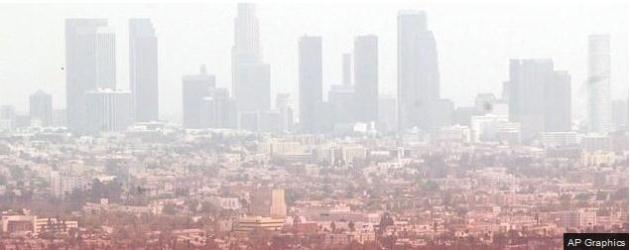 Harvard: Air Pollution Stops Global Warming
Harvard: Air Pollution Stops Global Warming.
Well, that's one way to curb our global warming trend - just pollute
more. In a counterintuitive story, a lessening of air pollution (smog)
may actually increase the rate of warming in the years to come. An excerpt from Fox News: "
While greenhouse gases like carbon dioxide and methane warm the
Earth's surface, tiny particles in the air can have the reverse effect
on regional scales. "What we've shown is that particulate pollution over the eastern
United States has delayed the warming that we would expect to see from
increasing greenhouse gases," says lead author Eric Leibensperger (Ph.D.
'11), who completed the work as a graduate student in applied physics
at SEAS." Photo credit: AP.
 "Warming Hole" Delayed Climate Change Over Eastern U.S.: Study
"Warming Hole" Delayed Climate Change Over Eastern U.S.: Study. Details from
physorg.com: "
For the sake of protecting human health and reducing acid rain,
we've now cut the emissions that lead to particulate pollution," he
adds, "but these cuts have caused the greenhouse warming in this region
to ramp up to match the global trend." At this point, most of the "catch-up" warming has already occurred."
Map credit above: "
This figure illustrates the mean effect on surface temperature, during
the period 1970-1990, of particulate pollution. The central region was
cooled by as much as 1 degree Celsius. Credit: Image courtesy of Eric
Liebensberger."
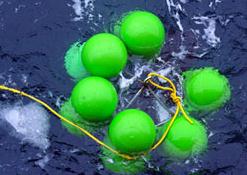 Atmospheric Warming Altering Ocean Salinity And The Water Cycle
Atmospheric Warming Altering Ocean Salinity And The Water Cycle. Here's an excerpt from
rdmag.com: "
A
clear change in salinity has been detected in the world's oceans, signaling
shifts and acceleration in the global rainfall and evaporation cycle tied
directly to climate change. In
a paper published in Science, Australian scientists from the
Commonwealth Scientific and Industrial Research Organisation (CSIRO) and
Lawrence Livermore National Laboratory (LLNL) reported changing patterns of
salinity in the global ocean during the past 50 years, marking a clear symptom
of climate change. Lead
author Paul Durack said that by looking at observed ocean salinity changes and
the relationship between salinity, rainfall, and evaporation in climate models,
they determined the water cycle has become 4% stronger from 1950 to 2000. This
is twice the response projected by current generation global climate models."
Photo credit above: "
Monitoring
of the Southern Ocean using arrays of anchored and drifting instruments
reveals freshening of deep waters around Antarctica. Some of the extra
melting of ice around the edge of Antarctica is flowing into the deep
sea and getting carried down to the deep ocean by ocean currents. Image:
Steve Rintoul/CSIRO."
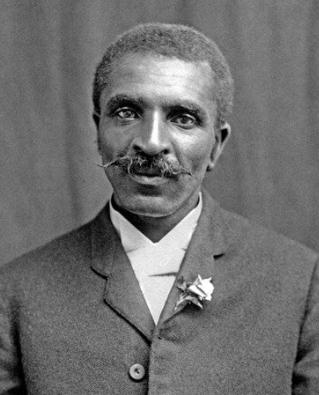 Arbor Day And The History Of Living Green.
Arbor Day And The History Of Living Green. Here's an excerpt of an interesting story from
The L.A. Times: "
In the Louisiana parish that was home to generations of my family,
people lived hard lives as field hands or sharecroppers, laboring from
"can see in the morning" to "can't see at night." They hoed and picked
cotton, corn, peas and other crops; they understood the planting cycle;
they ate locally grown fruits and vegetables without ever visiting a
supermarket. Long before the terms "eco-friendly" and "environmentalism" came into
vogue, generations of Americans embraced the principles of recycle,
reuse, reduce without ever naming them. Earth love was lived rather than
proclaimed."
Photo credit above: "
Though best remembered for his innovative uses of the peanut and sweet
potato, George Washington Carver "spoke for the trees" decades before
Dr. Seuss created the Lorax.
(Tuskegee University Archives/Museum / April 26, 2012)."
Global Warming Makes It Rain More, Except Where It Makes It Drier.
New research suggests that the water cycle is intensifying the rate of
evaporation, sparking heavier rains, accelerating the drying out regions
that are dry to begin with. Here's an excerpt from an important story
at
The Atlantic Wire: "
The
news from a new study on the earth's rainfall isn't the fact that
global warming is making it rain more in wet areas and less in dry ones,
it's how much scientists had previously underestimated that trend: By
half. The finding, published in the latest issue of Science but available without a subscription in Scientific American,
means global warming's impact on the earth's water cycle is a lot more
pronounced than we'd thought. In short, as research leader Paul
Durack, of Lawrence Livermore National Laboratory, told Science, "wet
regions will get wetter and dry regions drier."
Photo credit above: Reuters.
Where It Rains It Will Pour, Otherwise Tough Luck. More on the new findings about the acceleration and amplification of the water cycle at
Scientific American: "
Warmer air allows for more water vapor. So scientists have long predicted that global warming will result in a more intense water cycle—the
process by which water evaporates from the oceans, travels through the
atmosphere and then falls as rain. Now new measurements of the ocean's
salinity prove that prediction—and
suggest that global warming strengthens the water cycle even more than
anticipated. "What we found is that regions that are salty in the main
are becoming saltier" and areas that boast more rainfall are getting
fresher, explains oceanographer Paul Durack of Lawrence Livermore
National Laboratory, who led the research to be published in Science on April 27. "It's another independent estimate of how the climate is changing as we pump out CO2."
Photo credit above: "
READING THE OCEAN:
Around 3,500 robotic buoys have been deployed throughout the world's
oceans, delivering unprecedented data on temperature, salinity and
other measures. Image: CSIRO: Alicia Navidad."
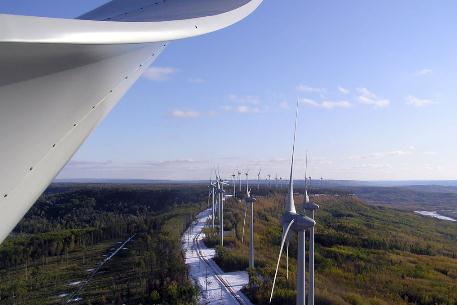 Canadian Businesses Unprepared For Global Warming, Panel Says
Canadian Businesses Unprepared For Global Warming, Panel Says. Details from the
Edmonton Journal: "
OTTAWA — Canadian businesses are putting their bottom line and the
country's economic health at risk by neglecting to prepare for
anticipated impacts of a changing climate, says a new report released
Friday by a federal government-funded advisory panel. The
study, produced by the National Round Table on the Environment and the
Economy, says that securities regulators also have a role to play in
requiring better information from businesses for the public and
investors."
Photo credit above: "
Bear Mountain
Wind Park, 16 kilometers southwest of Dawson Creek, B.C., is part of the
province's billion-dollar green-energy economy. Canadian busineses are
putting their bottom line and the country's economic health at risk by
neglecting to prepare for anticipated impacts of a changing climate,
says a new report released Friday by a federal government-funded
advisory pane. Photograph: B.C. Ministry of the Environment."
Changing Ocean Chemistry. As much as 90% of the
warming witnessed in the last 30-50 years may be absorbed by the world's
oceans, impacting salinity (salt) levels around the planet. Another
perspective on changes in the water cycle at
Climate Central.
Map credit above: "
Surface salinity changes for 1950 to
2000. Red indicates regions becoming saltier, and blue regions becoming
fresher. Credit: Paul Durack." Map courtesy of Climate Central.
Study Indicates A Greater Threat Of Severe Weather. The New York Times has more: "
New research suggests that global warming
is causing the cycle of evaporation and rainfall over the oceans to
intensify more than scientists had expected, an ominous finding that may
indicate a higher potential for extreme weather in coming decades.
By measuring changes in salinity on the ocean’s surface, the
researchers inferred that the water cycle had accelerated by about 4
percent over the last half century. That does not sound particularly
large, but it is twice the figure generated from computerized analyses
of the climate. If the estimate holds up, it implies that the water
cycle could quicken by as much as 20 percent later in this century as
the planet warms, potentially leading to more droughts and floods."
Photo credit: Wichita office of The National Weather Service.
Climate Change Isn't A Plot, It's Science. Here's an excerpt of a story at
The Sydney Morning Herald: "
My erstwhile travelling companion Nick Minchin argues the view in Fairfax Media
today that while we can all agree on clean energy, debate on the
science of climate change should continue. He states that "neither Anna,
nor those whom Anna took me to meet, could convince me that human
emissions of carbon dioxide (CO2) are driving dangerous global
warming". With due respect to Nick, this refusal to change his mind
wasn't for lack of trying – or for lack of evidence. There are two
pieces of clear, empirical evidence showing that human emissions of
carbon pollution are responsible for the 40 per cent increase in CO2
since pre-industrial levels."
EPA Chief Says Administration Plans Further Steps To Combat Climate Change. Details from
The Boston Globe: "
Environmental
Protection Agency administrator Lisa Jackson says the Obama
administration plans to take further action to combat climate change.
She said the administration plans to further exploit natural gas while
also investing in renewable energy, has provided the necessary permits
to facilitate offshore wind projects, and lauded Massachusetts for
taking a leading role in trying to reduce the dangerous greenhouse
gases that trap heat in the atmosphere. “This administration hasn’t
backed away from the need to address climate change, carbon pollution,
and other forms of pollution, even as we’ve been growing our economy
and trying to add jobs,” she said."
Video credit above: "EPA Administrator Lisa Jackson says the American public supports her agency's mission. (David Abel/Globe Staff)."
Colbert Blasts Study Blaming Immigrants For Global Warming. Seriously? Some of these headlines feel like they belong in The Onion. Details from
The Huffington Post: "
Stephen
Colbert may not believe in global warming, but a new argument is
slowly opening his eyes: That the cause of global warming is actually
immigration. A new ad running on news channels including MSNBC makes
the claim that the real cause of climate change is citizens coming to
America from other countries. But Stephen sees this new theory as
something that can heal the divide between the right and left. "Saving
the planet by demonizing immigrants gives liberals and conservatives
something they can do together," he said." (photo courtesy of Comedy Central).
The Electric Car Market Expands. Here's an excerpt of a story at
renewableenergyworld.com: "....
However,
it appears that these two companies aren't the only ones trying to get
in on the electric car market; it was recently reported that Hyundai
Heavy and Magna-E Car Systems have come together under an agreement to
develop next-gen lithium ion batteries. Their goals reach far and wide,
as Hyundai hopes to have 30% of the electric car market in Europe and
North America at some point or another. With this many car-makers
trying to make their way into the electric car industry, this is the
perfect time to invest in electric vehicles. As more and more
automobile companies try to enter this arena of electricity, more and
more competition will arise between car-makers, leading to better
vehicles as time goes on. Essentially, investing in electric vehicles
now would be perfect because they're share of the automobile world is
about to grow exponentially."
"Warming Holes" Delayed Global Warming in Some Regions US Regions.
Redorbit.com has the details: "
Certain
areas of the United States were spared the effects of climate change
thanks to the presence of tiny particles in the atmosphere, suggests new
research from climate scientists at the Harvard School of Engineering
and Applied Sciences (SEAS). Lead author Eric Leibensperger, a graduate
student in applied physics at SEAS at the time of the study, and
principal investigator Daniel Jacob, a professor of atmospheric
chemistry and environmental engineering at SEAS and a professor of earth
and planetary sciences at Harvard, used a 50 year model to study the
effect of particulate pollution on regions in the eastern US, the school
said in a Thursday press release."
Will The Stars Align For Small Nuclear Reactors? Details from
The New York Times: "
A
company that wants to build a new kind of nuclear reactor, one small
enough that it could be delivered by truck, has found a potential
customer. The Westinghouse Electric Company has lined up Ameren,
a St. Louis-based electric company, as a partner for its small modular
reactor project. Getting a strong indication of commercial interest is
critical because the Nuclear Regulatory Commission can review only a
few of the many proposed reactor designs and gives priority in the
licensing process to those with a stronger chance of getting built."
Rain Quicker To Arrive And Dry Up During Global Warming. Some of the consequences of a warmer atmosphere increasing the rainfall/evaporation cycle, the water cycle, as described in
Live Science: "
Global
warming is revving up the planet's cycle of evaporation and
precipitation, making wet places even wetter and dry places dryer, a new
study suggests. A team of researchers found the intensity of the water cycle
increased roughly 4 percent over the last half of the 20th century by
examining changes in the ocean's salt content. This means more movement
of water between the locations where it's stored, such as the
atmosphere, oceans and lakes. Their results indicate that as a result,
salty places are becoming saltier due to more evaporation, while fresh
places are becoming fresher due to more precipitation."
Photo credit above: "
The bottles lining this depth
profiler deploy at different depths to study changes in temperature and
salinity in the ocean. Credit: CSIRO."


